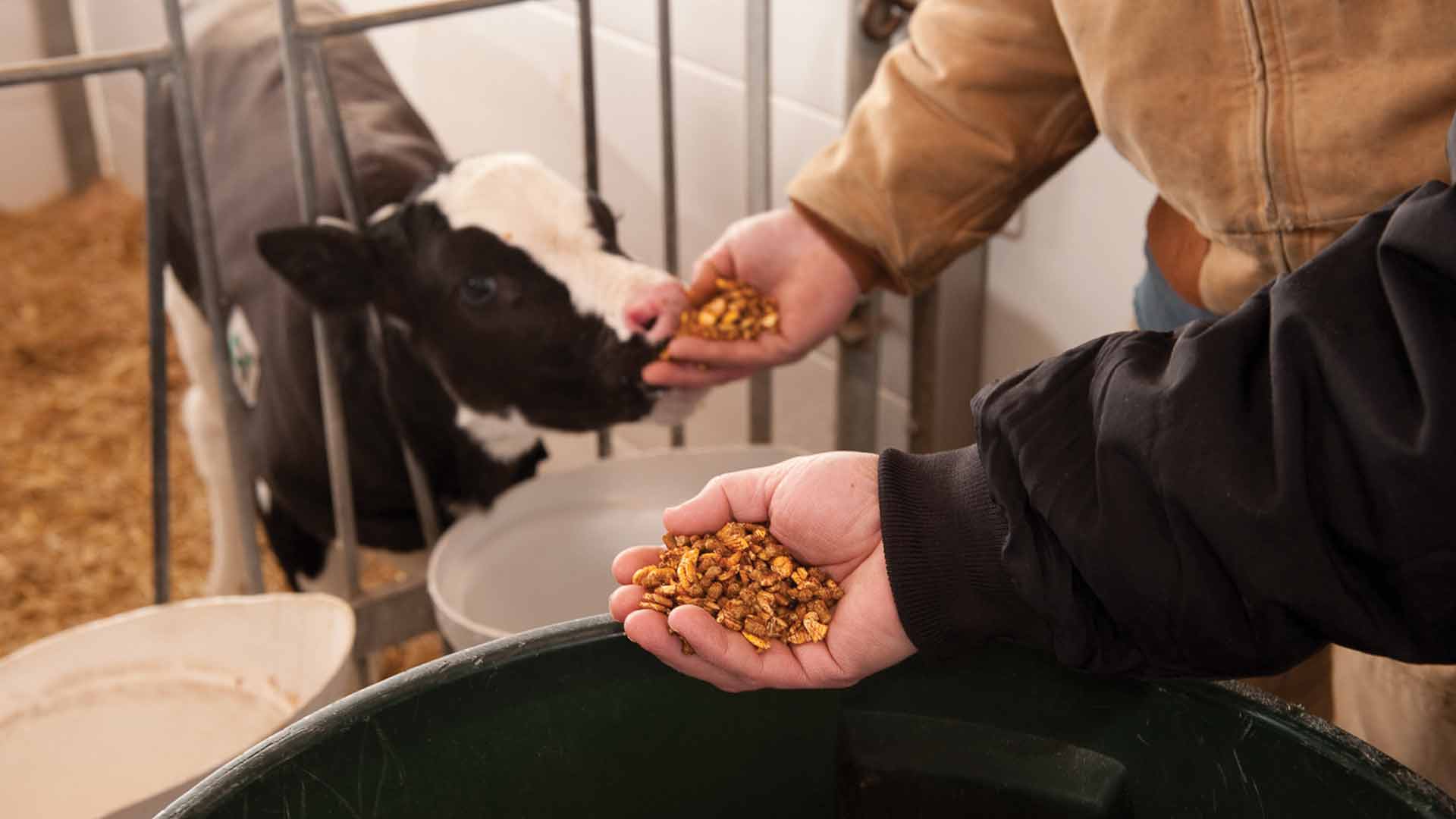Waseca, Minn. — Glycerin, a thick, syrupy byproduct of biodiesel production, may sweeten dairy operations. AURI-sponsored feeding trials at the University of Minnesota Southern Research and Outreach Center show glycerin could potentially replace some of the corn in dairy calf diets.
Fluctuating costs in livestock operations affect profits. When grain, protein or mineral costs rise, the profit margins narrow. When they fall, the bottom line improves. Using a low-value ag processing leftover could add stability to costs and benefit both livestock and biodiesel producers.
In 2009, of the 85 million gallons of glycerin produced in the United States, about half was a biodiesel byproduct. Glycerol has already shown potential in tests as a feed ingredient for poultry, cattle and swine.
“We wanted to identify if glycerol could be used as a one-to-one substitute for corn and if it could be utilized as an additional feed ingredient in a least-cost formulation,” says scientist Alan Doering who leads AURI’s coproduct program in Waseca.
The trials’ first stage involved feeding 100 two-to four-day old dairy heifer calves for 56 days. The control group was fed a diet of pelleted or standard texturized feed. The test groups were fed pelleted rations with either three or six percent of the corn replaced by glycerin. Calf diets were supplemented with milk replacer until weaning at 42 days.
“The diets containing three percent glycerol did as well as the control,” says Hugh Chester-Jones, dairy animal scientist at the Southern Research and Outreach Center. “The pre-wean gain was about 1.34 pounds per day. Calves on the six percent ration gained about 1.26 pounds a day, so they did nearly as well.”
In the trials’ second phase, calves 63 to 70 days old were fed either a control diet or three or six percent glycerin diets for 84 days. The calves weighed about 180 pounds at the start and finished the tests at around 450 pounds. As with the younger calves, the glycerin-enriched diets yielded no ill effects on growth.
“Our study showed that glycerin could be fed as high as six percent without sacrificing any performance,” says research center scientist David Ziegler.
“Producers are primarily concerned with feed efficiency and average daily gain,” Doering says. “These trials show that glycerin could offer an opportunity for dairy producers. It all depends on the economics.”
One Minnesota company is marketing feed-grade glycerin at 14 cents per pound. Calculating energy values, Doering says 14 cent per pound glycerin is comparable to $3.08 per bushel corn.
“Corn is still going to provide the majority of the energy in a dairy diet,” Doering says. “But there may be times including a percentage of glycerin can help lower those feed costs.”
